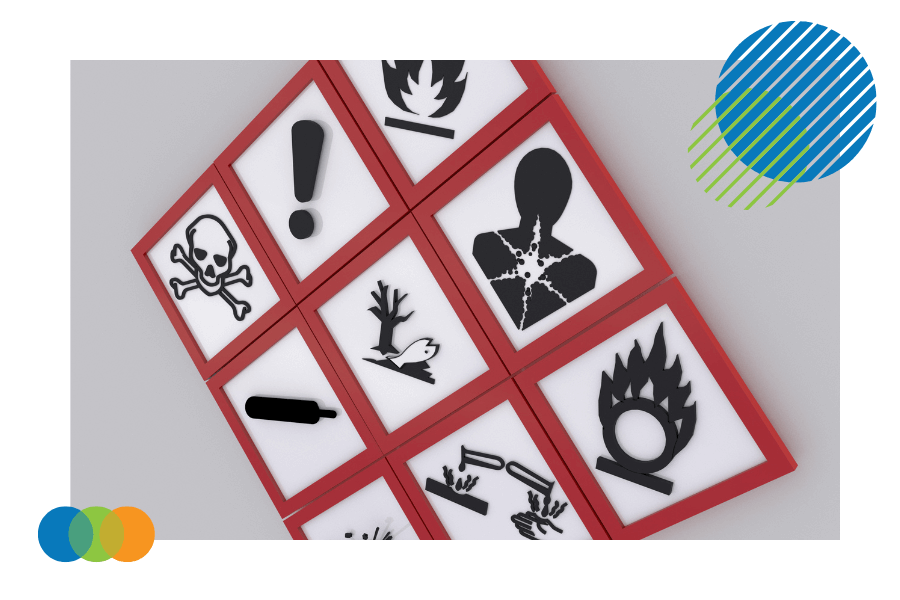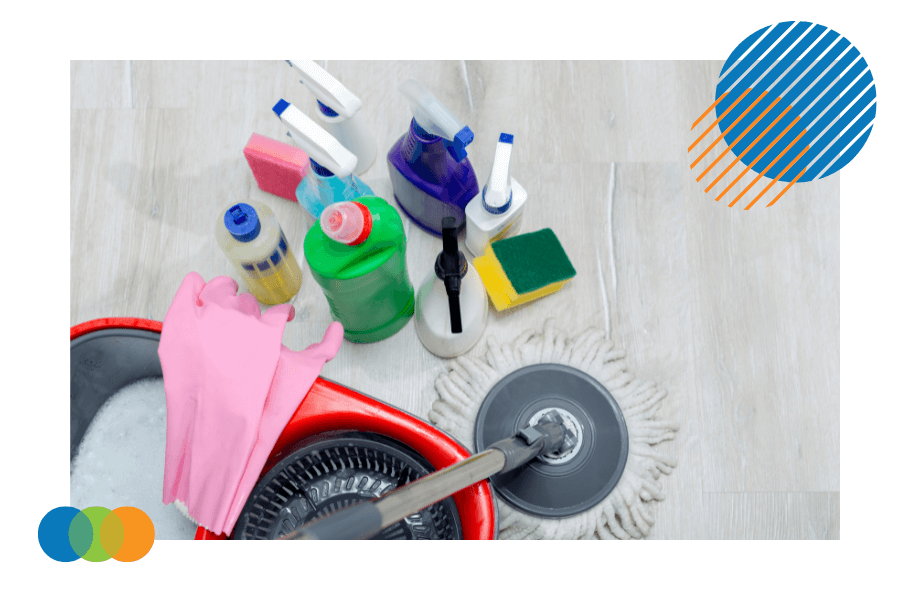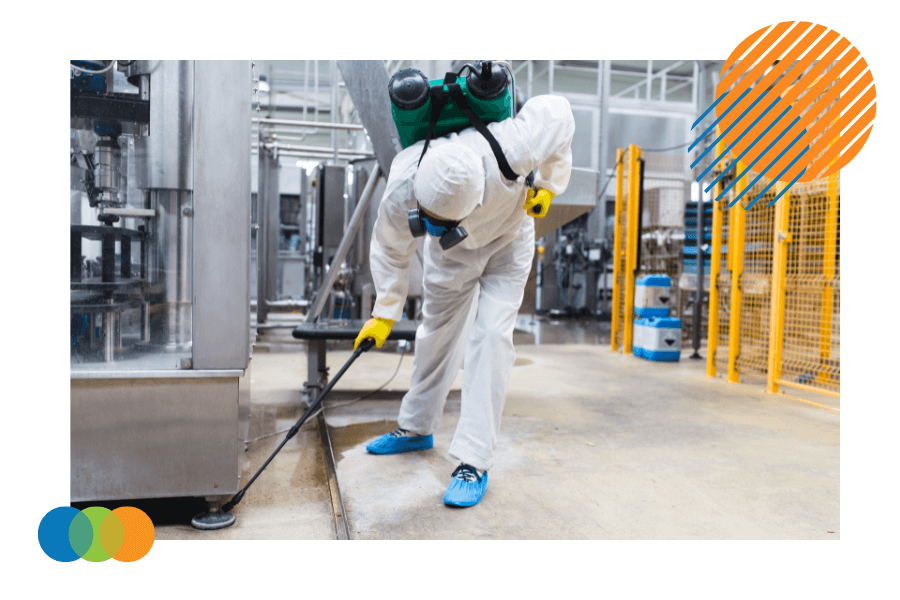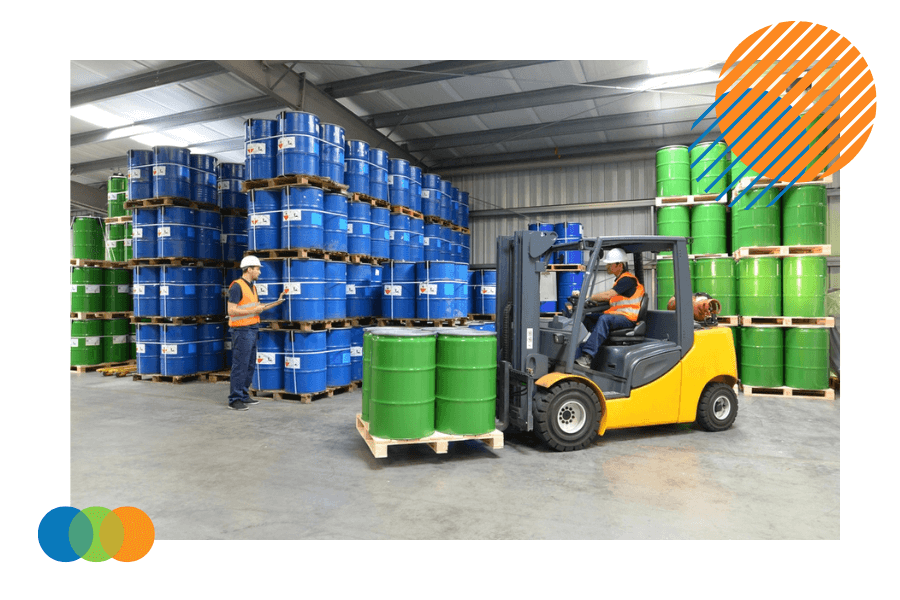 |
Written by Liz McDermott |

Canada's Workplace Hazardous Materials Information System (WHMIS) plays a crucial role in ensuring the safety of workers. WHMIS provides safe management of hazardous workplace chemicals and enables employers and workers to take appropriate measures to protect themselves and others. Implementing WHMIS in workplaces promotes a safe working environment and minimizes the risk of accidents, injuries, and long-term health effects related to hazardous materials.
This article covers why WHMIS is essential to workplace safety.

TABLE OF CONTENTS:
- What is WHMIS?
- Who enforces WHMIS?
- What changed with WHMIS 2015?
- What is the Globally Harmonized System (GHS)?
- Training and Education on WHMIS 2015
- WHMIS 2015 Compliance and Regulation
- The Consequences of Non-Compliance with WHMIS Regulations
- WHMIS Best Practices for Employers and Employees

What is WHMIS?
The Workplace Hazardous Materials Information System (WHMIS) is Canada's comprehensive hazard communication standard that ensures worker safety with dangerous materials. The system provides workers with hazard classification in major hazard groups for hazardous products to ensure precautionary measures for proper handling, storing, and safe disposal.
Established in 1988, WHMIS aims to reduce injury and disease by including a hazard statement in supplier labels to communicate specific health and safety information about hazardous products in the workplace to workers.
Who enforces WHMIS?
Various regulatory bodies enforce WHMIS in Canada, including Health Canada and the provincial occupational health and safety authorities. These agencies are responsible for conducting inspections, enforcing compliance with WHMIS requirements, and imposing penalties for non-compliance with hazardous products regulations. Canadian businesses must understand their obligations under WHMIS and work closely with the relevant regulatory authorities to maintain a safe working environment.
Federal Legislation of the National Standard
The Labour Program of ESDC oversees the WHMIS 2015 employer requirements for federally regulated workplaces in collaboration with Transport Canada and the Canada Energy Regulator. Transport Canada oversees aviation, marine, and rail employees, while the Canada Energy Regulator handles federal oil and gas industry employees.
What changed with WHMIS 2015?
The WHMIS 2015 transition period changed Canada's hazard communication system. WHMIS 1988 used a classification system based on Controlled Products Regulations (CPR) and Material Safety Data Sheets (MSDS). WHMIS 2015 shifted to using the Globally Harmonized System (GHS) of Classification and Labelling of Chemicals. This change harmonized Canada's hazard communication standards with other countries, promoting global consistency in classifying and labeling hazardous products. Suppliers and employers must use and follow the WHMIS requirements for labels and safety data sheets for hazardous products sold, distributed, or imported into Canada.

What is the Globally Harmonized System (GHS)?
The Globally Harmonized System (GHS) of Classification and Labelling of Chemicals was created by the United Nations. GHS aims to have a standardized set of rules for classifying hazards and labeling chemical products adopted and used globally through labels and safety data sheets. GHS aligns WHMIS rather than replacing it by incorporating new hazard classes for communicating hazard information.
Safety Data Sheets (SDS)
Safety Data Sheets (formerly known as MSDS) list hazards and precautionary statements for communicating hazard information containing vital information about chemicals’ psychical and environmental hazards and safe handling guidelines. SDS’ 16-section aims to provide details on toxicity, flammability, reactivity, and recommendations for storage, transportation, and ventilation. A safety data sheet can also specify the appropriate PPE required when working with the chemical and provide instructions for accidents and first-aid measures.
WHMIS Product Classification and Labeling Under GHS
Understanding the product classification under GHS is fundamental to effectively identifying and managing dangerous chemicals. WHMIS classifies every hazardous product into two significant hazards: physical and health. Each hazard group includes classes with specific hazardous properties and category criteria defining the hazard's nature and severity. By understanding WHMIS classification, suppliers can meet labeling requirements, employers and workers can accurately identify the dangers associated with the materials they handle, and implement control measures to safeguard occupational health and control hazards for repeated exposure.
GHS Hazard Classes and Categories
Under WHMIS 2015, chemicals are classified into various hazard classes and categories. Physical hazards include 19 classes, such as flammable gases and corrosive materials, while health hazards include 12 classes, such as respiratory sensitizers and carcinogens. Each class is divided into categories or types that provide more specific information about the nature and severity of the danger. Knowing these hazard classes and categories is essential.
GHS Pictograms Adopted by WHMIS 2015
Most GHS pictograms were adopted with WHMIS 2015 hazard classes and categories. If a hazardous product is categorized under a physical hazard class because it meets the physical hazard criteria, it may or may not include a pictogram in the product label and SDS. While a hazardous product can be properly labeled for meeting the criteria for a hazard class or category, not all classes and categories require a pictogram.

Which products are not covered by WHMIS?
While WHMIS covers a wide range of hazardous materials, certain products are exempt from its requirements. These include consumer products that are packaged and labeled consistent with the Consumer Chemicals and Containers Regulations (CCCR). These products are subject to different regulations and labeling requirements. Employers must differentiate between consumer and workplace hazardous products.
What happens under WHMIS if consumer products are used in the workplace?
If consumer products are used in the workplace, they are subject to WHMIS and the Consumer Chemicals and Containers Regulations (CCCR) requirements. The employer is responsible for ensuring that employees know the hazards associated with the consumer products they use and providing appropriate training and information. The employer must also ensure that any workplace-specific risks related to these products are correctly communicated and mitigated. By addressing WHMIS and the CCCR requirements, employers can effectively protect their employees from the hazards of consumer products in the workplace.

Training and Education on WHMIS 2015
Proper training and education on WHMIS are essential for safely managing hazardous chemicals. Employers are legally responsible for providing their workers with the necessary training to understand the hazards associated with the chemicals they work with and how to protect themselves. WHMIS training should cover GHS hazard classification, labeling requirements, safety data sheet interpretation, and proper handling and storage practices. By investing in comprehensive training programs, employers can promote a safety culture and minimize the risk of accidents and injuries. Keeping all workers' education and training records confidential is essential as they contain sensitive business information.

WHMIS 2015 Compliance and Regulation
Suppliers play a critical role in meeting labeling requirements and providing information on hazardous materials for hazardous products intended for use in the workplace.
Under WHMIS, who is considered a supplier, manufacturer, importer, and distributor?
In the context of WHMIS, a supplier refers to any person who sells or distributes hazardous materials. Suppliers include manufacturers, importers, and distributors. Manufacturers are responsible for producing and labeling hazardous products according to WHMIS requirements. Importers are individuals or organizations who bring dangerous materials into Canada, while distributors are responsible for selling and distributing these materials to end users. These entities have specific obligations under WHMIS to ensure the safety and proper communication of hazards associated with the materials they handle.
Confidential Business Information (CBI) defines specific product information that manufacturers can withhold from SDS or labels for three years if granted by Health Canada.

What are the suppliers' duties under WHMIS?
Suppliers have several duties under WHMIS 2015 to handle hazardous materials safely. These duties include providing accurate and up-to-date SDSs and labels, ensuring the information is easily understandable, maintaining records of the dangerous products supplied, and promptly providing updated information when required. Suppliers must also inform their customers of any significant changes to the hazards associated with the materials supplied. By fulfilling these duties, suppliers contribute to the overall safety and compliance of the workplace.
What do I need to do as an employer?
As an employer, it is your responsibility to ensure the safety of your workers by implementing WHMIS requirements. Employers must fulfill their obligations to demonstrate their commitment to workplace safety and minimize potential accidents, injuries, and health hazards.
Requirements include identifying and assessing the dangers associated with the materials used in your workplace, labeling all hazardous materials appropriately, providing comprehensive and up-to-date WHMIS training to workers, and maintaining accurate safety data sheets for all dangerous substances.
Regular reviews and updates to WHMIS programs are also crucial to ensure ongoing compliance with changing regulations and the evolving understanding of hazardous products. By fulfilling these obligations, you not only provide workers with a safe place of work but also comply with the legal requirements set forth by WHMIS.
How Are WHMIS 2015 Requirements Being Enforced in Ontario?
In Ontario, the enforcement of WHMIS 2015 requirements is carried out by other legislation, the Ministry of Labour. Inspectors from the ministry conduct routine visits to workplaces to ensure compliance with WHMIS regulations. During these visits, inspectors assess whether employers have implemented proper hazard communication programs, provided adequate employee WHMIS training, and maintained accurate Safety Data Sheets (SDSs) and labels for hazardous materials. Non-compliance with WHMIS regulations can result in penalties and fines, highlighting the importance of adhering to the requirements set forth by WHMIS.
What happens when an inspector visits the workplace?
When an inspector visits the workplace to assess WHMIS compliance, they will thoroughly review the hazard communication program, WHMIS training records, SDSs, and labels for hazardous products. The inspector may also conduct interviews with employees to ensure they have received the necessary training and are aware of the hazards associated with the materials they handle. If any non-compliance issues are identified, the inspector may issue orders, penalties, or fines, depending on the severity of the violation. Employers need to be proactive in maintaining WHMIS compliance to avoid any legal repercussions and, more importantly, to ensure the safety of their employees.

The Consequences of Non-Compliance with WHMIS Regulations
Non-compliance with WHMIS regulations can have severe consequences for both employers and employees. From a legal perspective, employers who fail to comply with WHMIS regulations may face fines, penalties, and potential legal action from injured workers. These fines and penalties can be substantial and can significantly impact a company's finances.
From a safety perspective, non-compliance can lead to accidents and injuries in the workplace. Without the proper WHMIS training and precautions, employees may not be aware of the potential risks associated with hazardous materials and may not know how to handle them properly. Non-compliance can result in accidents, injuries, and even fatalities. In addition to the human cost, workplace accidents can negatively impact a company's reputation and productivity.
WHMIS Best Practices for Employers and Employees
Implementing best practices for WHMIS goes beyond mere compliance with regulations. Employers should strive to create a safety culture by prioritizing training workers, encouraging open communication about hazardous materials, and promoting active participation in hazard identification and risk assessment.
On the other hand, employees should actively engage in WHMIS training, follow safe work practices and procedures, and promptly report any concerns or incidents related to chemicals.
By adopting and maintaining these best practices, employers and employees contribute to a safer workplace and the overall success of WHMIS implementation.
Conclusion: Ensuring Workplace Safety with WHMIS
In conclusion, the Workplace Hazardous Materials Information System (WHMIS) is a critical framework promoting the safe handling, storage, and disposal of hazardous materials in Canadian workplaces. WHMIS ensures employers train workers to provide them with the necessary information to understand the hazards associated with dangerous goods and take appropriate precautions to handle the product safely.
Employers play a vital role in WHMIS compliance by implementing hazard communication programs, providing comprehensive training, and ensuring accurate labeling and SDSs. By prioritizing WHMIS and adhering to its requirements, employers can create a safe working environment that protects the well-being of their workers.
Please remember that WHMIS training is crucial for all individuals handling hazardous materials, so prioritize it in your workplace safety initiatives.
Ensure workplace safety by providing comprehensive WHMIS training to your employees.
For more information, please contact us to inquire about our Health & Safety training programs.

